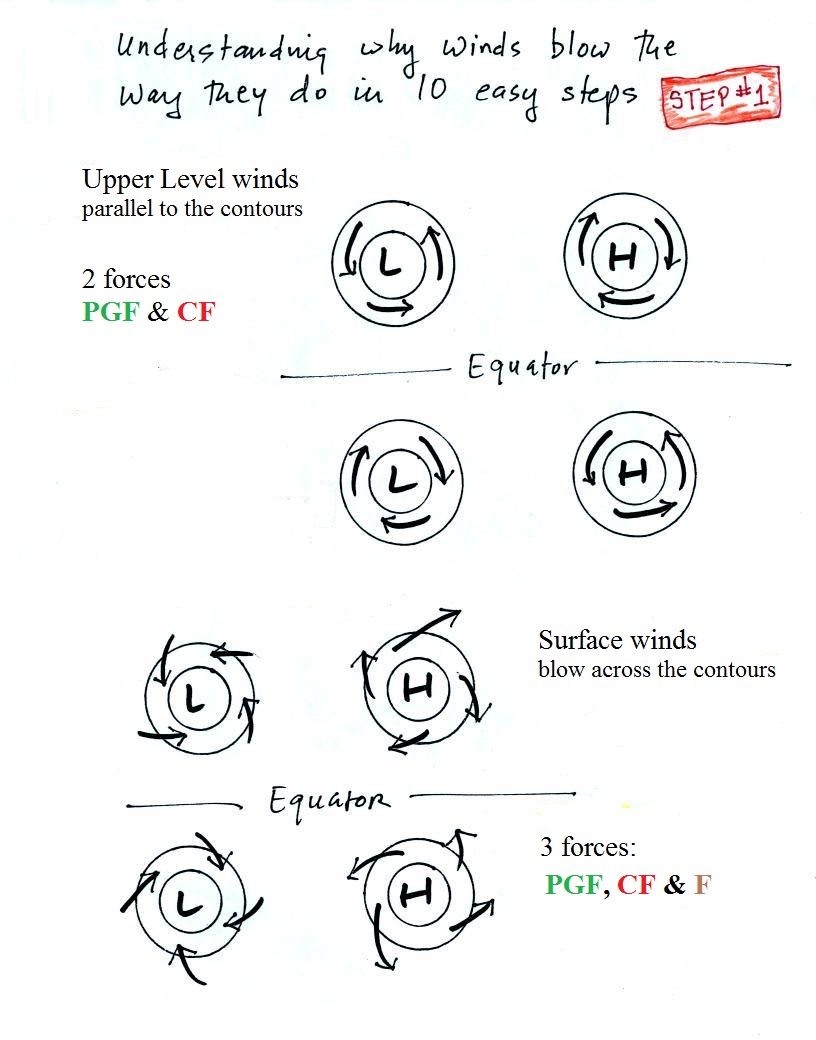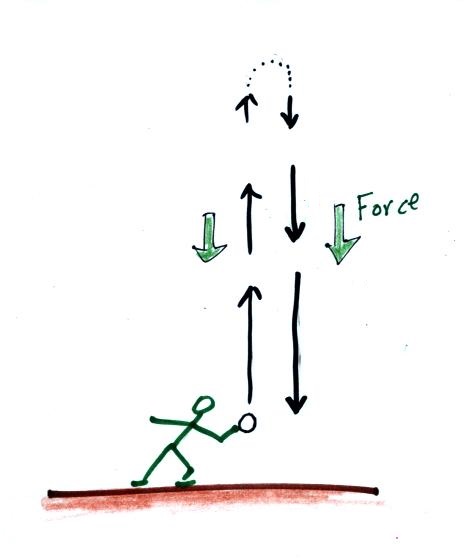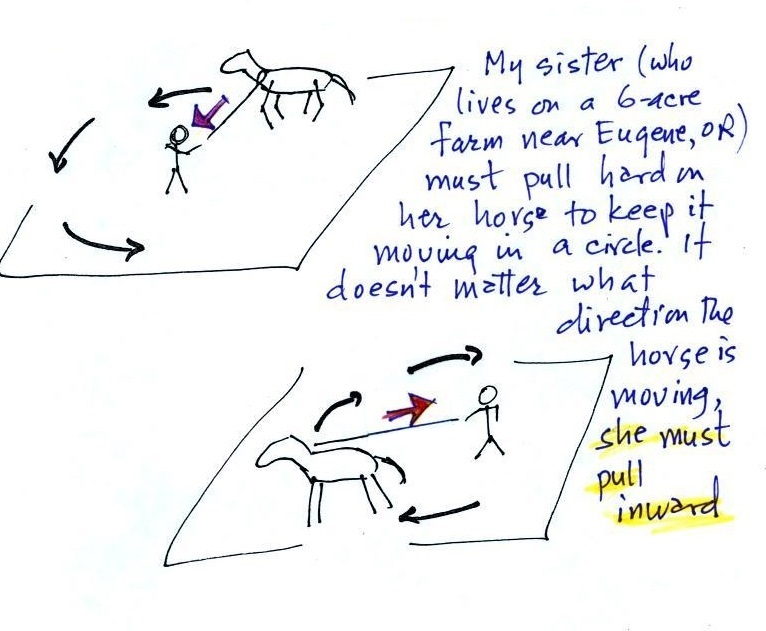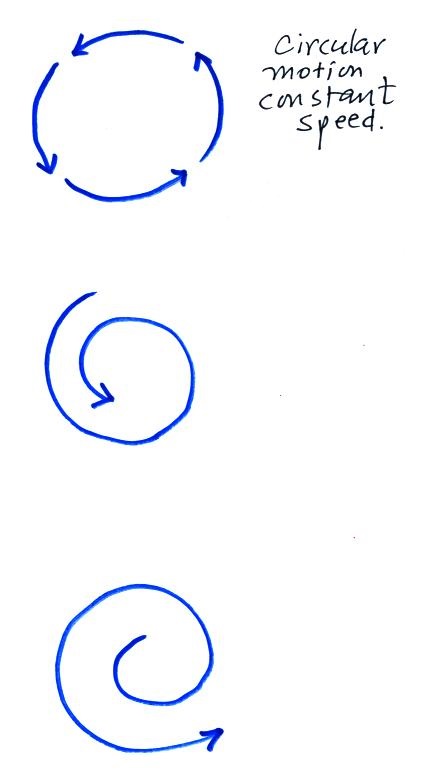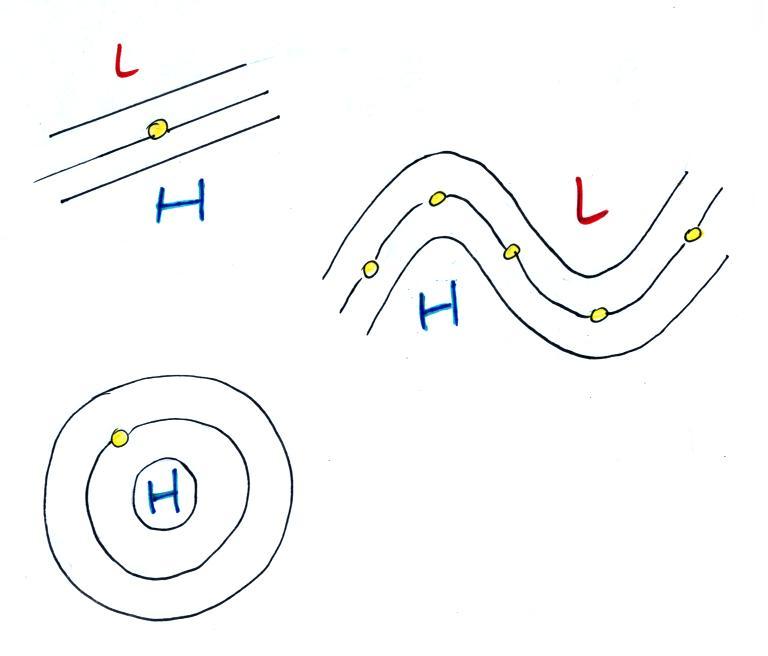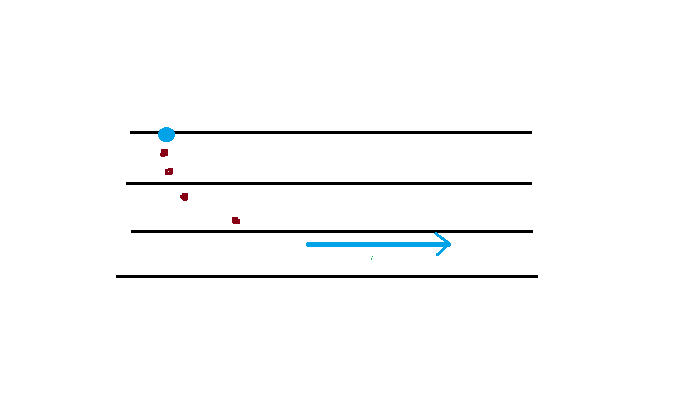We start with some stationary air
in the lower left corner of the picture. Low
pressure is at the top and high pressure at the bottom
of the picture.
The PGF can start stationary air moving. The PGF
will point toward the top of the picture
(perpendicular to the contours and toward the low
pressure at the top). There won't be any
Coriolis force when the air is stationary.
Once the wind starts to blow (blue
line above) the CF will appear. The CF will be
weak at first because the wind speed is low but the CF
will begin to turn the wind to the right. As the
wind picks up speed the CF will increase in
strength. Eventually the wind will be blowing
parallel to the contours from left to right. The
PGF and CF point in opposite directions and are of
equal strength. The net force is zero and the
wind will continue to blow to the right in a straight
line at constant speed.
Here's a simpler less cluttered way of depicting what
we have just figured out.
The
dots show the direction of the initial
motion. That will always be
toward low pressure. Then you
look in the direction the wind starts
to blow and look to see if the wind
turns right or left. It turned
right in this case. That's the
effect of the Coriolis force and means
this is a northern hemisphere map.
Here's one last example to test your
understanding.
The
direction of the initial motion is shown with
dots. Where is the high and low pressure
in this case? Is this a NH or SH
chart. You'll find the completed map at
the end of today's notes.
Step #5 - Upper level winds, low pressure, northern
hemisphere
Next we'll be looking at the upper level winds that develop
around circular centers of high and low pressure.

We start with some stationary air at the bottom of the
picture. Because the air is stationary, there is no
Coriolis force. There is a PGF
force, however. The PGF at Point 1 starts
stationary air moving toward the center of low pressure
(just like a rock would start to roll downhill). The
dots show the initial motion
A rock would roll right into the center of the
picture. Once air starts to move, the CF causes it to turn to the
right (because this is a northern hemisphere
chart). As the wind speeds up the CF strengthens. The
wind eventually ends up blowing parallel to the contour
lines and spinning in a counterclockwise direction.
Note that the inward PGF
is stronger than the outward CF.
This results in a net inward force,
something that is needed anytime wind blows in a circular
path.
Upper level winds spin counterclockwise around low
pressure in the northern hemisphere.
Step #6 - Upper level winds, low pressure, southern
hemisphere
We start again with some stationary air at Point 1 in this
figure. The situation is very similar. Air
starts to move toward the center of the picture but then
takes a left hand turn (the CF
is to the left of the wind in the southern
hemisphere). The winds end up spinning in a clockwise
direction around low in the southern hemisphere. The
directions of the PGF,
CF, and the net inward force are all
shown in the picture.
Upper level winds spin clockwise around low pressure in
the southern hemisphere.
Step #7 - Upper level winds, high pressure,
northern hemisphere

Here initially stationary air near the center of the picture
begins to move outward in response to an outward pointing
pressure gradient force (PGF
is pointing toward low pressure which is on the edges of the
picture). Once the air starts to move, the Coriolis
force (CF) will cause
the wind to turn to the right. The dots show the
initial outward motion and the turn to the right. The
wind ends up blowing in a clockwise direction around the
high. The inward pointing CF
is stronger than the PGF so
there is a net inward force
here just as there was with the two previous examples
involving low pressure. An inward force is need with
high pressure centers as well as with centers of low
pressure. An inward force is needed anytime something
moves in a circular path.
This is about as far as we
got in class today, but I'm going to
include one more figure to complete the material on upper
level winds. We'll take care of surface winds (Steps 9
and 10 in class on Thursday)
Step #8 - Upper level winds, high pressure, southern
hemisphere

Here are the answers to the questions on the class handout and
embedded in today's notes.


